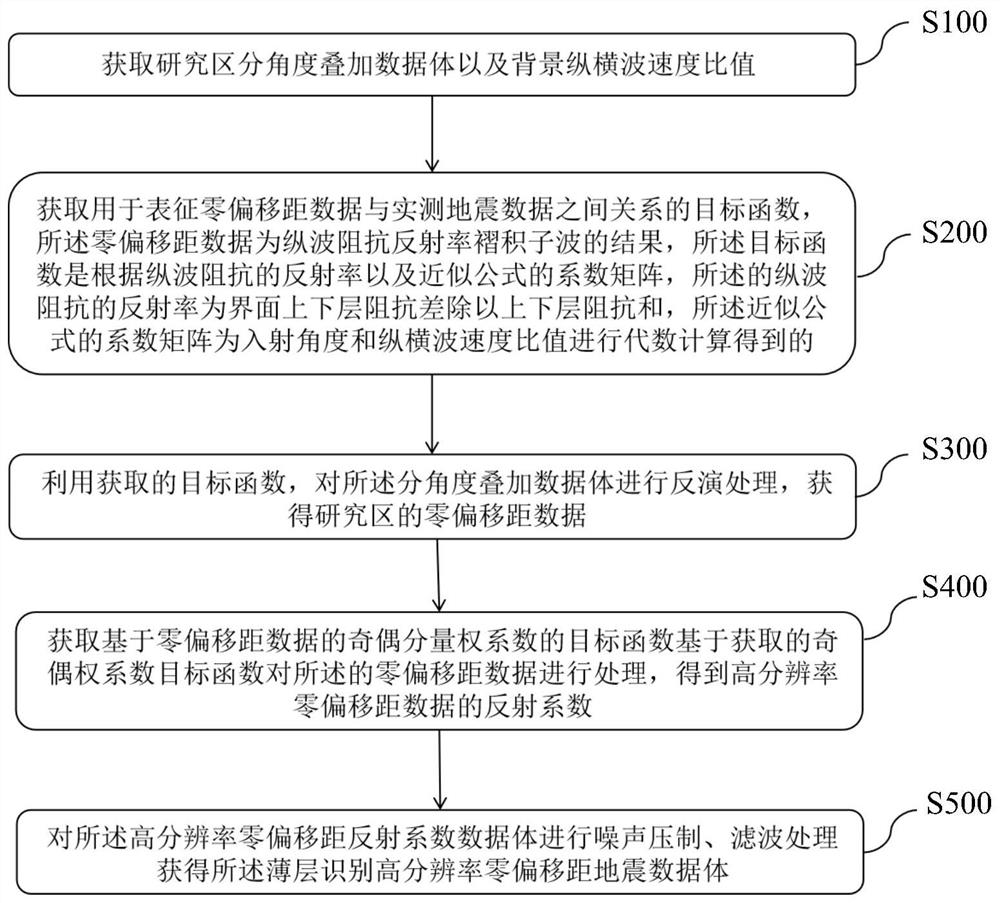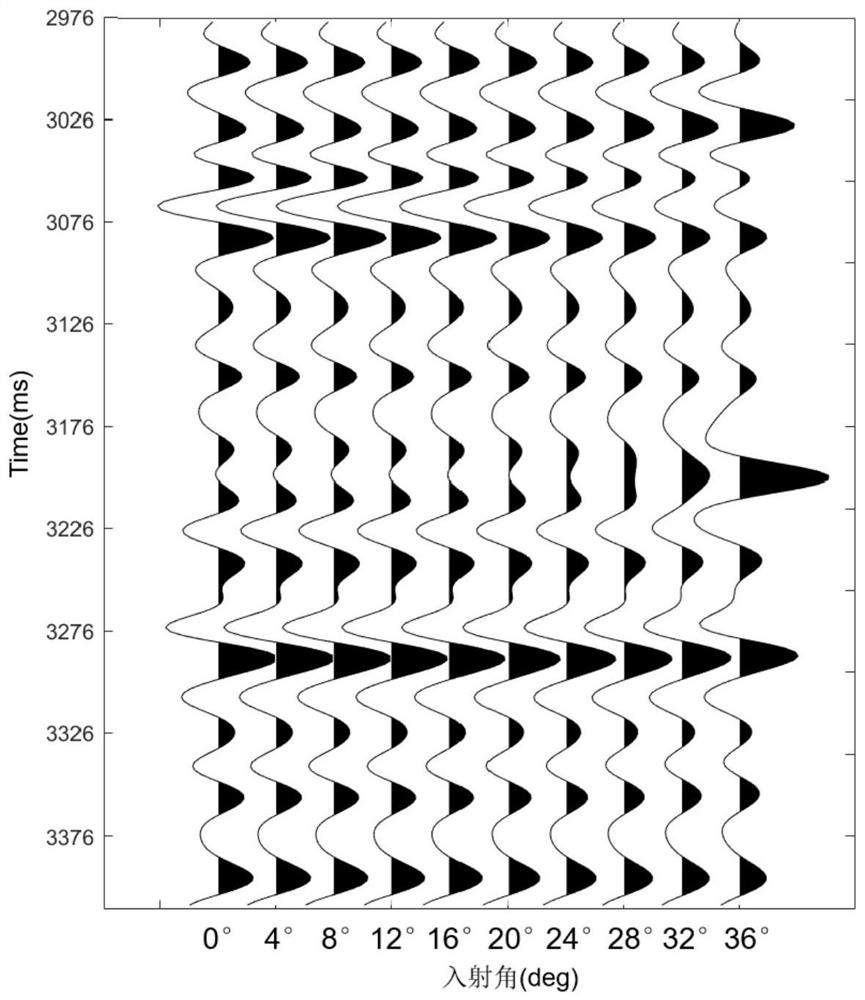Method and system for thin layer depiction
A thin layer, weight coefficient technology, applied in measurement devices, instruments, scientific instruments, etc., can solve the problems of inversion accuracy limitation, time-consuming calculation, excessive condition number, etc., to improve longitudinal resolution and direct inversion stability. , the effect of improving the accuracy
- Summary
- Abstract
- Description
- Claims
- Application Information
AI Technical Summary
Problems solved by technology
Method used
Image
Examples
Embodiment 1
[0054] figure 1 A flow chart of the method for thin layer characterization according to the embodiment of the present invention is schematically shown.
[0055] Such as figure 1 As shown, the method for thin-layer characterization according to the embodiment of the present invention includes the following steps: S100. Acquire the angle-stacked data volume of the research area, and obtain the background P-to-s wave velocity ratio in the study area through pre-stack inversion. S200. Obtain an objective function used to characterize the relationship between the zero-offset data and the measured seismic data, wherein the shift data is a wavelet result of compressional wave impedance reflectivity convolution. The objective function is obtained by algebraic calculation based on the P-wave impedance reflectivity and the coefficient matrix of the approximate formula, where the P-wave impedance reflectivity is the ratio of the impedance difference between the upper and lower layers of...
Embodiment 2
[0080] The method for thin-layer characterization in the embodiment of the present invention preferably further includes step S500 on the basis of embodiment 1: performing noise suppression on the basis of the zero-offset reflection data with improved resolution obtained in step S400 and filtering to obtain zero-offset reflection data with improved longitudinal resolution. On the basis of the obtained zero-offset reflection data with improved resolution, principal component analysis is used to suppress noise, and band-pass filtering is used to suppress abnormal frequency bands to obtain high-resolution zero-offset reflection information. Geological analysis of the target layer and extraction of elastic parameters provide constrained data.
Embodiment 3
[0082] Furthermore, the method for thin-layer characterization in this embodiment of the present invention, on the basis of Embodiment 2, further includes step S600: performing elastic Parameter inversion to analyze the geological evolution of the study area.
[0083] figure 2 It schematically shows the measured well data of the embodiment of the present invention, including compressional wave velocity, shear wave velocity and density data. Using these three kinds of measured well data, the reflection coefficients at different incident angles are obtained. image 3 Schematically shows the angle gather calculated by using the theoretical logging data. In this embodiment, the incident angle ranges from 0° to 36°, with an interval of 4°, and then the reflection coefficient and the Reich subfolder with a main frequency of 25Hz Gather data from different incident angles can be obtained, and the gather data can be used as observed seismic data.
[0084] Figure 4 Schematically s...
PUM
 Login to View More
Login to View More Abstract
Description
Claims
Application Information
 Login to View More
Login to View More - R&D
- Intellectual Property
- Life Sciences
- Materials
- Tech Scout
- Unparalleled Data Quality
- Higher Quality Content
- 60% Fewer Hallucinations
Browse by: Latest US Patents, China's latest patents, Technical Efficacy Thesaurus, Application Domain, Technology Topic, Popular Technical Reports.
© 2025 PatSnap. All rights reserved.Legal|Privacy policy|Modern Slavery Act Transparency Statement|Sitemap|About US| Contact US: help@patsnap.com



